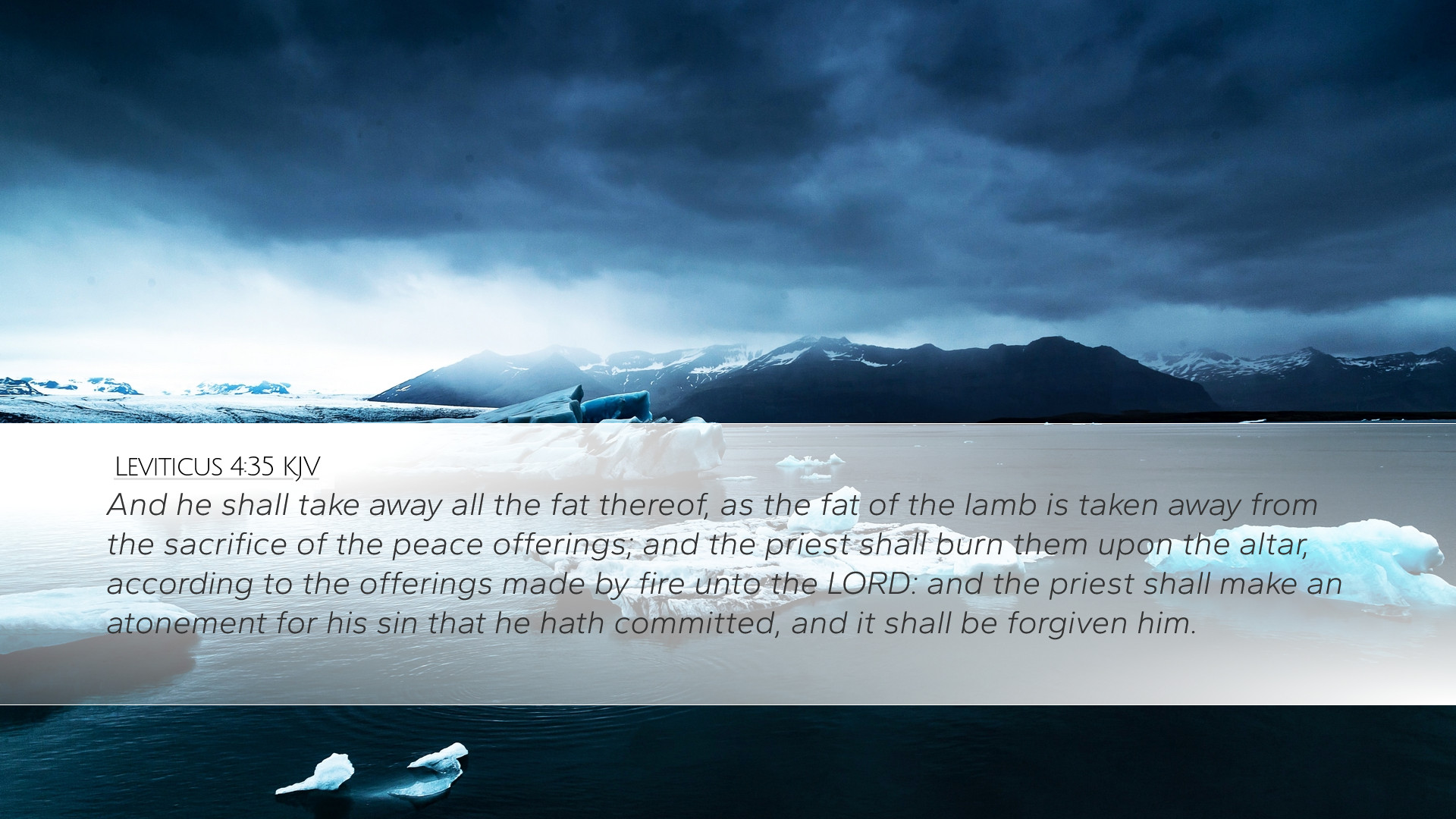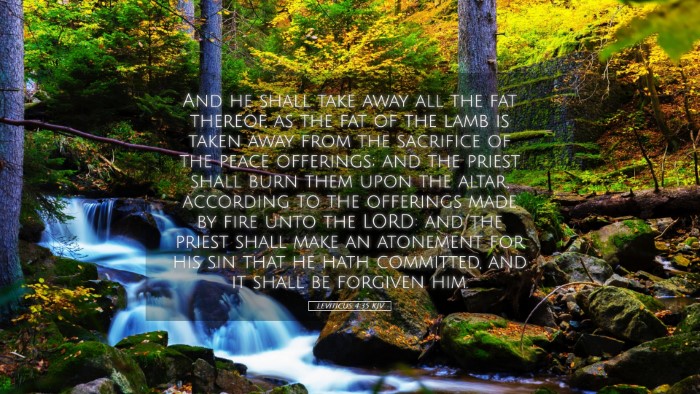Commentary on Leviticus 4:35
Verse Context: Leviticus 4:35 states, "And the priest shall take of the blood thereof, and put it upon the horns of the altar of burnt offering, and shall pour out all the blood at the bottom of the altar." This verse falls under the section dealing with the sin offerings, particularly focusing on how these sacrifices were to be performed and what they signified for the people of Israel.
Overview
Leviticus provides crucial instructions for Israel regarding holiness, atonement, and the significance of sacrifices. In this verse, we observe the procedures outlined for the sin offering—a detail that illustrates the gravity of sin and the processes necessary for restoration to a right relationship with God. The responsibilities of the priest as an intermediary between the individual and God underscore the seriousness of atonement for sin.
The Role of the Priest
Matthew Henry emphasizes the priest's role in this process:
- Intermediary: The priest acts as a bridge between God and the sinner, highlighting the need for a holy mediator in sin management.
- Sacrificial Act: The priest's actions with the blood demonstrate the necessity of sacrifice for sin; blood symbolizes life and atonement.
Henry asserts that the priest, by applying blood to the horns of the altar, signifies the atonement’s acceptance and the ongoing relationship one can have with God post-reconciliation.
Significance of Blood
Albert Barnes' commentary sheds light on the significance of blood in the sacrificial system:
- Atonement: Blood is a key element for atonement; it represents life and is the means through which God offers forgiveness for sins.
- Symbol of Purification: The application of blood on the altar serves as a symbol of purification and acceptance by God.
The pouring out of blood at the base of the altar is seen as a comprehensive offering to God, emphasizing the holistic nature of atonement needed for sin.
Structural Elements in Worship
Adam Clarke provides insights into the structural elements in worship as portrayed in this verse:
- The Altar: The altar becomes a central figure in the restoration process; it is a place of exchange between the divine and human realms.
- Horns of the Altar: The horns hold significance, often interpreted as places of refuge and safety, suggesting that one can find mercy at this altar.
Clarke connects the imagery of the altar in Leviticus to later themes of Christ, who becomes the ultimate sacrifice and altar for believers, inviting them to find refuge in His sacrifice.
Theological Implications
This verse presents several theological implications that resonate throughout Scripture:
- Sin and Atonement: It reflects the weight of sin and God's provision for atonement, pointing to the necessity of payment for transgressions.
- Foreshadowing Christ: Many theologians see in this ritual a prefiguration of Christ's ultimate sacrifice, fulfilling the sacrificial system's requirements.
- God's Holiness: The strict procedures underscore God's holiness and the seriousness with which He addresses sin, indicating that only through blood can reconciliation occur.
Application for Today
For pastors, students, and theologians, the exploration of Leviticus 4:35 allows for deeper understanding and appreciation of God's holiness, mercy, and the seriousness of sin:
- Understanding Atonement: Modern believers can gain profound insight into the nature of atonement; recognizing that Christ's sacrifice fully satisfies the requirements established in Leviticus.
- Emphasizing Mediation: This passage can challenge believers to consider the nature of Christ’s ongoing role as mediator between God and humanity.
- Celebration of Grace: As Christians reflect on this process, they can celebrate the grace that through Christ, access to God has been granted without the continual need for sacrifice.
Conclusion
Leviticus 4:35 is rich in meaning and implications for both the ancient context and modern faith practice. Commentators like Matthew Henry, Albert Barnes, and Adam Clarke provide layers of understanding surrounding sacrifice, mediation, and God's unchanging nature. As we explore this passage, we are reminded of the great cost of our sin, the beauty of God’s provision for atonement, and the mercy that invites us to approach His altar with thankful hearts.


